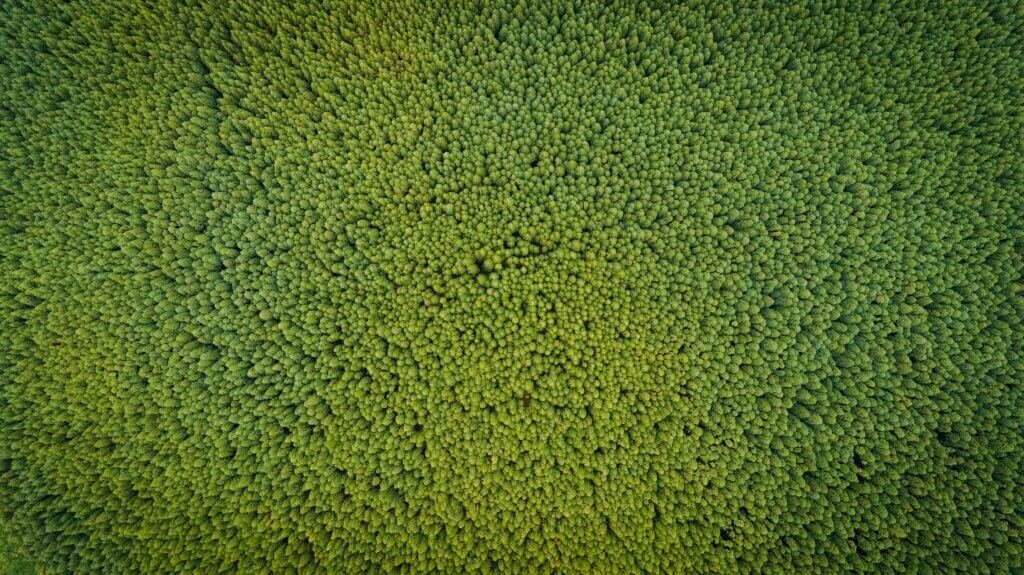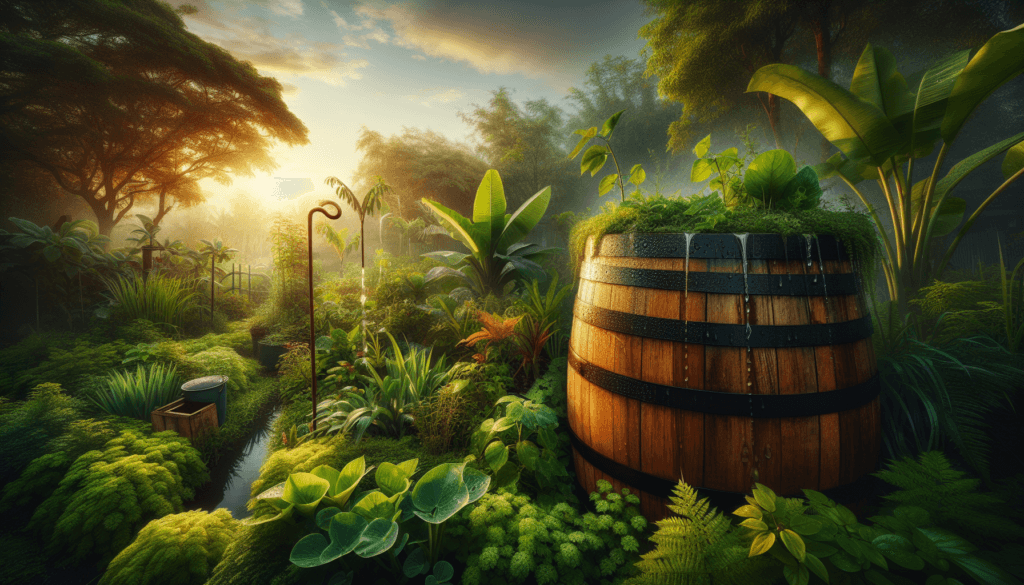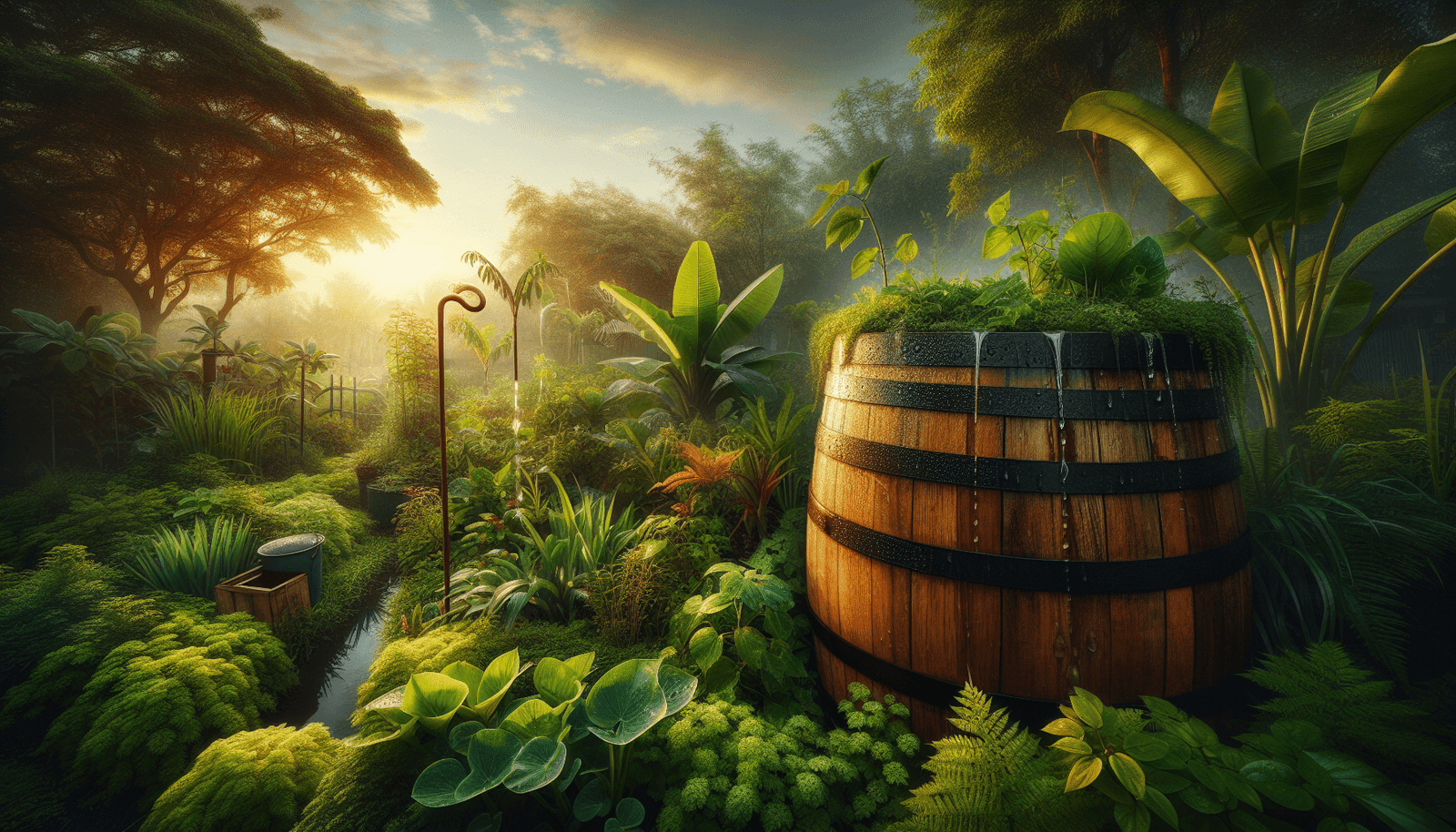If you’re passionate about sustainable gardening and want to make a positive impact on the environment, using rain barrels is a game-changer you don’t want to miss out on. Rain barrels provide an innovative solution to collect and store rainwater, which can then be used to nourish your plants while conserving valuable water resources. Not only does it reduce your reliance on treated water, but it also helps prevent stormwater runoff and erosion. With rain barrels, you have the power to become a green thumb while making a difference, one drop at a time.

Benefits of Rain Barrels in Sustainable Gardening
Rain barrels are an excellent addition to any sustainable gardening practice. They offer several benefits that not only help the environment but also save you money. In this article, we will explore the various advantages of using rain barrels in your gardening routine.
Water Conservation
Conserving water is crucial in sustainable gardening, and rain barrels play a significant role in achieving this goal. Rainwater is a free and abundant resource that can be easily collected and used in your garden. By capturing rainwater in barrels, you can reduce your reliance on municipal water sources, which are often treated with chemicals and have a higher cost.
Reduced Water Bills
Another significant benefit of rain barrels is the potential to reduce your water bills. With a properly installed rainwater collection system, you can collect and use rainwater for irrigation instead of relying solely on tap water. This can lead to substantial savings over time, especially during dry seasons when water usage tends to increase.
Mitigating Stormwater Runoff
Stormwater runoff is a concern in urban areas, as it can lead to flooding and pollution of natural water bodies. Rain barrels help mitigate this issue by capturing rainwater that would otherwise flow off your property and into storm drains. By reducing the volume of runoff, you contribute to the overall health of your local ecosystem and reduce the strain on municipal drainage systems.
Types of Rain Barrels
Rain barrels come in various shapes, sizes, and materials. Understanding the different types can help you choose the one that suits your needs and preferences best.
Plastic Rain Barrels
Plastic rain barrels are a popular choice due to their affordability and durability. They are lightweight, making them easy to move and install. Additionally, plastic barrels are resistant to rust and can withstand different weather conditions. Depending on your needs, you can find plastic rain barrels with a range of capacities, from smaller ones suitable for balcony gardens to larger barrels suitable for extensive outdoor spaces.
Wooden Rain Barrels
Wooden rain barrels offer a more aesthetically pleasing option for those who prioritize the appearance of their garden. They can blend seamlessly into the surroundings and enhance the overall look of the landscape. However, wooden barrels require more maintenance compared to plastic or metal barrels. They need to be properly sealed and treated to ensure longevity and prevent rotting.
Metal Rain Barrels
Metal rain barrels are known for their durability and longevity. They can withstand harsh weather conditions and are resistant to UV rays, ensuring they last for many years. Additionally, metal barrels provide better insulation, keeping the stored rainwater cooler during hot summer months. However, they tend to be more expensive than plastic or wooden barrels and may require a higher upfront investment.
Choosing the Right Rain Barrel
When selecting a rain barrel for your garden, there are several factors to consider. Taking these into account will help you choose a rain barrel that meets your specific needs and preferences.
Capacity
The capacity of your rain barrel depends on the size of your garden and the amount of rainfall in your area. Consider the average rainfall in your region and the surface area you plan to collect water from. This will help you determine the appropriate capacity to ensure you have enough water to meet your gardening needs.
Material Durability
Consider the durability of the materials used in the rain barrel. Plastic barrels are lightweight and resistant to rust, but may not be as durable as metal barrels. Wooden barrels require more maintenance but can add a charming touch to your garden. Assess the climate in your area and choose a rain barrel that can withstand the weather conditions.
Aesthetics
Since rain barrels are visible in your garden, it’s important to consider the aesthetics. Choose a rain barrel that complements the overall look and feel of your outdoor space. Plastic barrels are available in various colors and styles, while wooden barrels offer a more natural and rustic appearance. Consider your personal preference and the existing design elements in your garden.
Location Considerations
When choosing a rain barrel, think about where you plan to place it. Ensure it is situated in a convenient location that allows easy access to water for your garden. Consider factors such as proximity to downspouts, proximity to the areas you need to water, and ease of maintenance. Additionally, make sure the chosen location is level and stable to prevent the barrel from tipping over.
Installing and Setting Up Rain Barrels
Proper installation and setup of rain barrels are essential to optimize their functionality and efficiency. Follow these steps to ensure a successful setup.
Selecting a Suitable Location
Before installing your rain barrel, survey your property to find the most suitable location. Choose a spot near a downspout to ensure efficient water collection. Ensure the location is level and stable to prevent the barrel from tipping over. Consider any landscaping or structural elements that may obstruct the installation process.
Setting Up a Rainwater Collection System
To collect rainwater efficiently, you will need a rainwater collection system that connects the rain barrel to your downspout. Most rain barrels come with installation kits that include downspout diverters or extensions. Follow the manufacturer’s instructions to properly set up the collection system. Ensure that the system is securely attached and free of leaks.
Installing a Diverter and Overflow System
Installing a diverter and overflow system is crucial to ensure the proper functioning of your rain barrel. A diverter allows water to flow into the barrel while diverting excess water away to prevent overflow. It also ensures that debris and contaminants are filtered out before reaching the barrel. An overflow system directs excess water away from the foundation of your house and into suitable drainage areas.

Maintaining Rain Barrels
Proper maintenance of rain barrels is essential to ensure their longevity and functionality. Follow these maintenance tips to keep your rain barrels in optimal condition.
Regular Cleaning
Regular cleaning is crucial to prevent the buildup of debris, sediment, and algae inside the rain barrel. At least once a year, empty the barrel completely and scrub the interior with a mild detergent and a brush. Rinse it thoroughly before reinstalling. Additionally, remove any debris or leaves from the diverter and overflow system to ensure proper water flow.
Preventing Algae Growth
Algae growth can occur in rain barrels, especially during warmer months. To prevent this, position your rain barrel in a shaded area that receives minimal direct sunlight. Sunlight promotes algae growth, and shading the barrel helps reduce this issue. Additionally, consider adding a fine mesh screen or using an organic algaecide to inhibit algae growth.
Winterizing Rain Barrels
Before winter arrives, it’s essential to winterize your rain barrels to prevent damage from freezing temperatures. Start by emptying the barrels completely to avoid any water freezing inside. Disconnect the rain barrel from the downspout and ensure all the water is drained. Remove any accessories such as diverters or hoses and store them in a dry place. Finally, cover the barrel or store it in a sheltered area to protect it from snow and ice.
Using Rain Barrel Water in the Garden
Rain barrel water can be utilized in various ways to maximize its benefits in your garden. Here are some suggestions on how to use collected rainwater effectively.
Irrigation Practices
One of the primary uses for rain barrel water is irrigation. Using a watering can or a connected hose, distribute the collected water to your plants, shrubs, and garden beds. Ensure that the water is evenly distributed, allowing it to soak into the soil instead of generating runoff. This helps conserve water and promotes healthy plant growth.
Composting with Rain Barrel Water
Rain barrel water can also be used to moisten compost piles. Adding water from the barrel to your compost helps maintain moisture levels in the pile, allowing beneficial microbial activity to break down organic matter effectively. This ensures the production of nutrient-rich compost that can be used to enrich your garden soil.
Avoiding Cross-Contamination
To avoid cross-contamination and potential health risks, it’s important to separate rain barrel water from water used for human consumption. Do not use rain barrel water for drinking, cooking, or bathing purposes. Always label your rain barrel as non-potable water to prevent accidental misuse.

Tips for Maximizing Rain Barrel Efficiency
To maximize the efficiency of your rain barrel system, consider implementing these tips:
Harvesting Rainwater from All Downspouts
If your property has multiple downspouts, connect each one to a rain barrel to maximize water collection. This ensures that you utilize as much rainfall as possible and prevent runoff from entering storm drains.
Using Rain Barrel Water Strategically
During periods of heavy rainfall, it’s important to use rain barrel water strategically. Direct excess water from the overflow system to specific areas of your garden or lawn that may benefit from additional moisture. By taking advantage of the abundance of rainwater, you can conserve tap water and promote healthy plant growth.
Supplementing with Other Water Sources
While rain barrel water can significantly reduce your reliance on municipal water sources, it may not be sufficient during extended periods of drought or low rainfall. Consider supplementing with other water sources such as well water or greywater to ensure your plants receive adequate hydration.
Troubleshooting and Common Issues
Despite proper installation and maintenance, you may encounter some common issues with rain barrels. Here are a few troubleshooting tips to help you address these concerns:
Overflow Problems
If your rain barrel consistently overflows, it may indicate that the barrel is too small for your needs or that the diverters and overflow systems are not functioning correctly. Consider upgrading to a larger capacity barrel or inspecting the diverters and overflow systems for clogs or damage.
Mosquito Infestation
Mosquitoes can breed in stagnant water, including rain barrels. To prevent mosquito infestation, make sure your rain barrel is properly covered with a fine mesh screen or lid. This will prevent mosquitoes from accessing the water and laying eggs.
Leaks and Cracks
Over time, rain barrels may develop leaks or cracks, compromising their functionality. Regularly inspect your rain barrel for any signs of damage or deterioration. If you notice leaks, consider repairing them with appropriate sealants or replacing the barrel if the damage is extensive.

Expanding Rainwater Harvesting Systems
If you find that a single rain barrel is not sufficient for your water needs, you can consider expanding your rainwater harvesting system by connecting multiple barrels or exploring other options.
Connecting Multiple Rain Barrels
By connecting multiple rain barrels in a series, you can significantly increase your water storage capacity. This is achieved by diverting excess water from the first barrel to subsequent barrels, ensuring optimal utilization of rainwater.
Integrating Rain Gardens
Rain gardens are landscaped areas designed to collect and absorb rainwater. By integrating a rain garden into your property, you can naturally filter and store excess rainwater, reducing the strain on your rain barrels. Rain barrels can be connected to the rain garden to further enhance water storage and conservation.
Installing a Pump System
In situations where you require pressurized water for specific tasks, such as watering plants with a sprinkler or cleaning outdoor surfaces, consider installing a pump system. A pump system will allow you to utilize the stored rainwater under pressure, expanding the range of applications for which you can use rain barrel water.
Conclusion
In conclusion, rain barrels offer numerous benefits in sustainable gardening. From water conservation and reduced water bills to mitigating stormwater runoff, they are an eco-friendly solution for any avid gardener. By choosing the right rain barrel, installing and maintaining it properly, and utilizing rainwater strategically, you can contribute to a more sustainable and environmentally conscious gardening practice. Embrace the many advantages of rain barrels and enjoy a greener, cost-effective, and beautiful garden.



